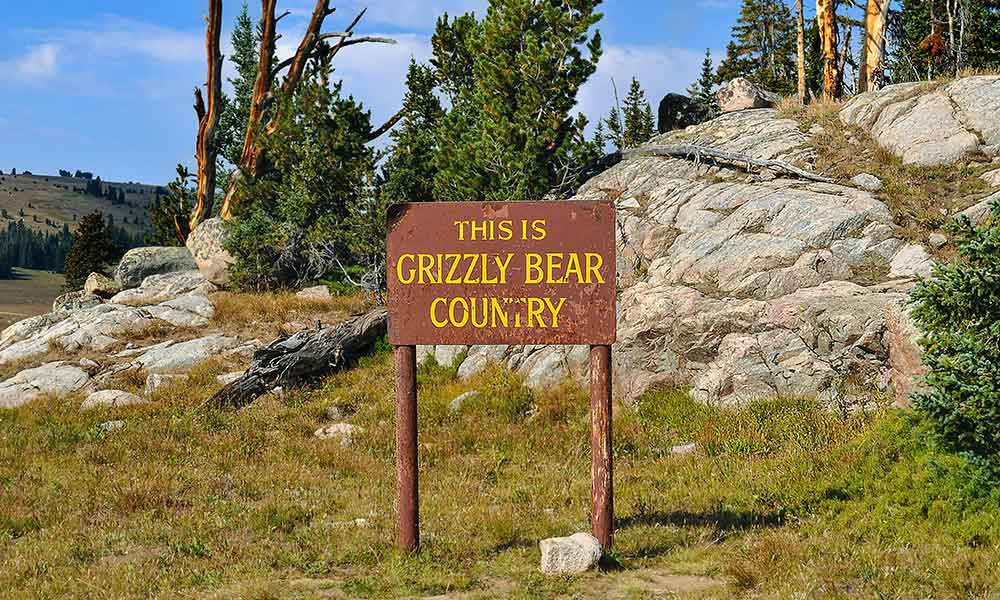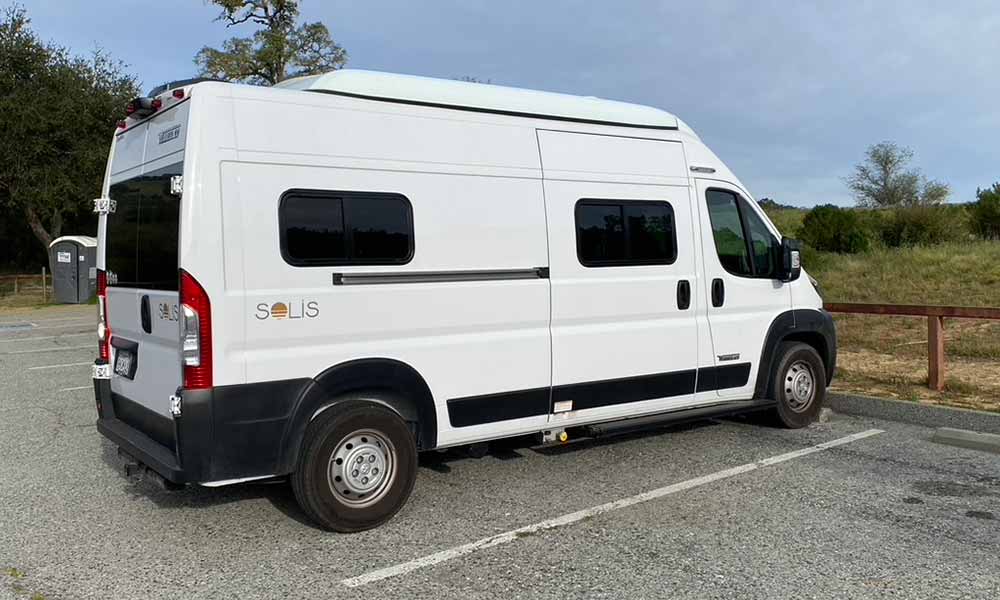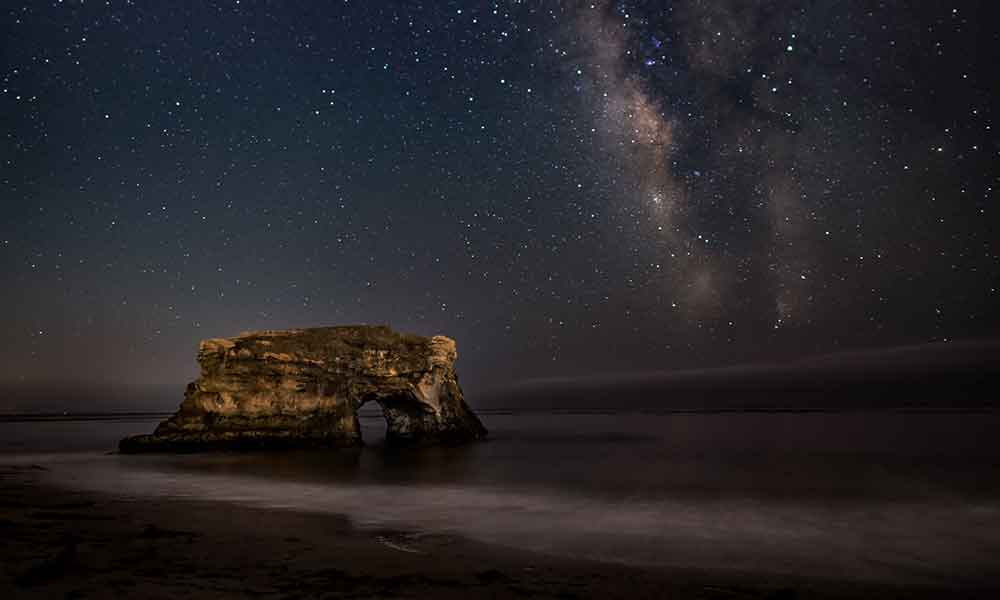Bears look incredibly cute and cuddly from a distance. But close up, their breath is rank, their teeth and nails are long, and they’re full of bone-crushing muscle. Thus, bears make for crappy tent guests and dinner companions. Bears don’t share; they take all the food, destroying whatever was holding it, be it your tent or car. So how do you keep the food for yourself?
Storing food in bear country requires a metal food locker, bear canister, bear bag, or hanging your food. You will also need to place any clothing you’ve cooked in and toiletries such as toothpaste and deodorant into bags or canisters and kept far from where you are sleeping.
Bears are naturally curious animals that enjoy exploring. They can and do wander into campsites because they find them fascinating. However, those that do not view humans as a food source will not harm people. However, there is more than one way to bear-proof food. Which one you use depends on the park’s rules and your camp’s terrain.
How To Bear Proof Your Food While Camping
Bear-proofing your food has some pretty obvious benefits for you, the human. Losing all your food five days into a ten-day hike is a real hunger-bummer. Nor is anyone’s auto insurance delighted when their car has been “rearranged” by a bear break-in. (Do not use your car as a bear box.)
But for bears, the consequences can be even worse. Bears that stop fearing humans have a shorter life expectancy. This doesn’t just make them high risk for being euthanized or susceptible to poachers. Human food has been shown to have a negative impact on their hibernation cycle and cause them to age faster.
Thus, bear-proofing your food is a win-win for all involved. But bears have a fantastic sense of smell and can detect the scent of “food” even from a tent that was once cooked in six months previously. Also, their definition of “food smells” is expansive. Thus, in addition to securing your food, you must also include anything the bear might mistake for food.
This includes:
- Any clothing you’ve cooked in or spilled food on
- Toiletries such as toothpaste, sunscreen, lotion, deodorant, soap, bug repellant
- Stove fuel
- Any drink bottle that has ever had anything but water in it
- Candles
- Gum
- Breath mints
Also, ensure your tent is set up at least 100 yards from your campfire, bear-proofed food, and clean dishes (never leave dirty dishes around or wash near your tent).
Lastly, if you have cooked in your tent during cold months, use a different, never-been-cooked-in-tent for months when bears are wide awake. Because none of the following bear-proofing methods will work if your tent smells like a kitchen.
How To Bear-Proof Using A Metal Locker
Formal campsites often provide metal food lockers for visitors to use, a good 100 yards away from tents and cabins. These are often kept near the specialized bear-proof dumpsters, so all “food smells” are in one location. This area might even be secured during certain night hours as further bear-proofing.
Using a locker is easy; just stash and lock per the campsite’s instructions. However, some of these lockers might be bear-proof but not fully rain-proof. So keep your food in waterproof containers on the off chance there is a minor leak.
How To Bear-Proof Using A Bear Canister
Bear canisters are hard, usually plastic, cylinders (sometimes a box) with a bear-proof lid that keeps the bear out and odor from escaping. Some National Parks already have these chained in their backcountry permit-only primitive campsites. Others require you to hike with one. They can be heavy, up to 2 lbs, but come in different sizes for those who need less.
Some forests and parks insist on the bear canister method. If so, you can be fined if you are discovered hiking or camping without one. However, if the cost of buying one is not in your budget, some parks do rent them.
Bear canisters are easy to use: place all items inside and secure the lid. They are excellent when there are no trees or polls around to hang a bag.
However, you must figure out how to secure the canister, so you don’t end up on a bear’s version of an Easter egg hunt. Because bears will play with them and the canisters do go wandering. To reduce “playtime,” try to wedge them with rocks or logs. Also, adding reflective tape will help if you ever have to hunt for it.
How To Bear-Proof Using A Bear Bag
Bear bags are an excellent option if in an area that does not insist on a bear canister. These are easier to carry than a canister and are made from tough material that prevents bears (and mice) from tearing the bag. Just be sure to mark yours, so it doesn’t get mixed up with another’s, as they are a popular device.
It’s often recommended to hang these even though it isn’t required, so the bear doesn’t squish anything inside. There are aluminum liners to help prevent crushing but carrying those can be a pain.
How To Bear-Proof By Hanging Your Bag
Suspending a bag from a tree or pole is a time-honored method of bear-proofing. This is an excellent way to bear-proof if you do not own specialized canisters and bags. It also tends to take up the least room in a pack. Furthermore, as we said above, it’s a good idea to hang your food, even if using a bear bag, just to limit the likelihood of crushing.
However, this method is useless if there are no trees and poles around to hang your stuff. Also, people who are not gifted with height or climbing abilities will find it difficult to do if not at a campsite that provides hoisting hooks.
Lastly, those who secure the bear bag with a rope that comes down to within a bear’s reach might find the bear has learned to take bags down. (Yes, bears are clever and do learn new tricks.) Your best bet is to secure the rope to another branch that is out of reach from the ground. But again, this means you need to be able to climb the tree, which isn’t always an option.
Conclusion
Bear proofing is a relatively straightforward process, but each method does have its pros and cons. Often what method is used isn’t your decision but must be done in line with the park or establishment’s rules. When it is your choice, pick an option that works for your camping style and the terrain.







